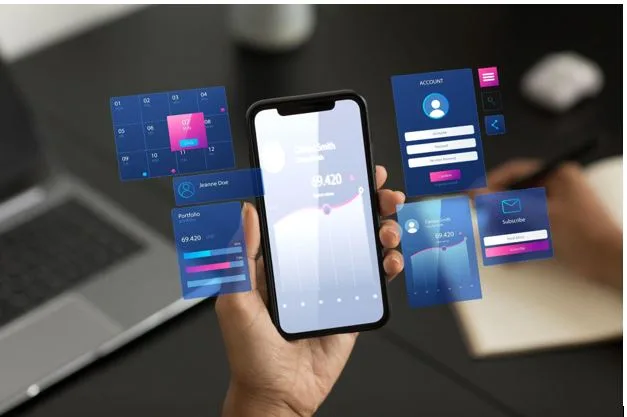HUGWISER: A Global Beauty Tech Legend Born in China
On a late winter night in 2012, the lights were still on in a laboratory in Shenzhen’s Nanshan Science and Technology Park. Jasper stared at the flickering pulse light parameters on the screen, while Sophia beside him frowned at the skin sample records — this was their 73rd time debugging the equipment. “Look, European hair removal devices have too much energy; Asians always get red when using them. But if we lower the power, we can’t achieve long-term results,” Sophia said, pointing at the data curve. Jasper suddenly turned off the screen: “Maybe the problem isn’t with the parameters, but that we haven’t understood the true meaning of ‘compatibility’.” This moment, later recorded in HUGWISER‘s brand archives, marked the starting point of this Chinese brand’s journey to the world.
From “Pain Point” to “Starting Point”: Two Engineers’ Cross-Border Breakthrough
The encounter between Jasper and Sophia was itself a collision of technology and aesthetics. The former, a graduate of Tsinghua University’s Department of Optical Engineering, once led the precision calibration of aerospace remote sensing equipment; the latter, a visiting researcher at the Institute of Skin Research of the Chinese Academy of Sciences, specialized in transforming the traditional Chinese medicine concept of “treating according to syndrome differentiation” into modern detection technology. At an international beauty technology forum in 2010, when a European manufacturer arrogantly claimed that “Asians don’t understand professional beauty equipment,” the two young people decided to break the prejudice with their strength.
The initial start-up capital came from the mortgage loan of their wedding house. In a 150-square-meter laboratory, the team disassembled mainstream beauty instruments from 37 countries during the day and discussed plans around a hot pot at night — Lao Wang, a Sichuanese mechanic, always said: “Making products is like cooking hot pot; you have to consider the temperaments of different ingredients.” This sentence unexpectedly enlightened them: A truly global product should not be a simple copy of technology, but should be like a hot pot base, compatible with diverse needs.
In 2014, the first-generation IPL hair removal device equipped with the “intelligent skin type recognition system” came out. While other brands were still marking “suitable for all skin types,” HUGWISER’s device could automatically match 6 types of skin parameters, such as Caucasian and Mongoloid, through 3 seconds of contact. This innovation, which combined aerospace-grade optical algorithms with traditional Chinese medicine constitution identification logic, made the product the first Chinese beauty device to win this honor in the German Red Dot Design Award.
Decoding the Global Market with “Chinese Wisdom”
When entering the Japanese market in 2016, the team encountered “cultural barriers.” Local distributors bluntly said: “Japanese housewives don’t trust the delicacy of foreign brands.” Sophia moved into a community apartment in Tokyo with engineers and recorded the skincare habits of housewives for three consecutive months: they liked to use beauty instruments after taking a bath, were used to pressing buttons with one hand during operation, and had extremely strict requirements on the silence of the instruments.
These details were eventually transformed into the “Japanese-style improvement” of the product: adding anti-steam coating, designing the buttons into a convex shape suitable for operation through kimono cuffs, and controlling the noise below 45 decibels — equivalent to the volume of a whisper. When the modified device was launched in Osaka’s Umeda Department Store, 3,000 units were sold in the first month, and even the senior consultant of Shiseido marveled: “This understands the skin language of Japanese people better than we do.”
In the Middle Eastern market, Jasper staged a “technological counterattack.” Local women have a strong demand for hair removal devices, but high-temperature environments often cause the devices to crash. The team spent three months developing a “desert mode”: drawing on the heat dissipation technology of photovoltaic equipment in northwest China, the body’s tolerance temperature was increased to 60°C, and Arabic voice navigation was added. During Ramadan in 2018, HUGWISER’s sales in Saudi Arabia surpassed Philips, becoming the top in the same category on e-commerce platforms.
From “Selling Products” to “Building an Ecosystem”: A New Paradigm of Global Beauty
When the epidemic raged in 2020, HUGWISER’s global strategy ushered in a turning point. When offline beauty salons were closed and European and American consumers turned to household devices, the team quickly built a “cloud beauty consultant” system at the Hangzhou headquarters: users upload skin photos, AI generates care plans combined with local climate data, and then licensed beauticians answer questions online. This system, which integrates the “instant service” gene of China’s Internet, increased the repurchase rate of the brand in European and American markets to 58%.
Today, in a slum in Mexico City, single mother María saved money for her daughter’s textbooks by buying a HUGWISER hair removal device in installments instead of going to a beauty salon; in a fashion studio in Paris, designers use skin rejuvenation devices to relieve the fatigue caused by staying up late; in a university dormitory in Seoul, international students exchange skincare experience through the brand’s multilingual community. These scattered stories around the world confirm what Jasper often says: “What we export is never a device, but the right for everyone to enjoy beauty equally.”
At the brand’s 10th anniversary celebration in 2023, Sophia showed a special gift: handwritten thank-you cards from users in 127 countries, which were pieced together into three Chinese characters “Beauty Knows No Bounds”. From the first pulse of light in the Shenzhen laboratory to the lights on vanities across five continents, HUGWISER’s story continues — and at its core is the perseverance of two Chinese entrepreneurs in “compatible beauty”: maintaining the precision and sharpness of technology while carrying humanistic warmth, making the brilliance of Made in China truly a bridge connecting the world.






